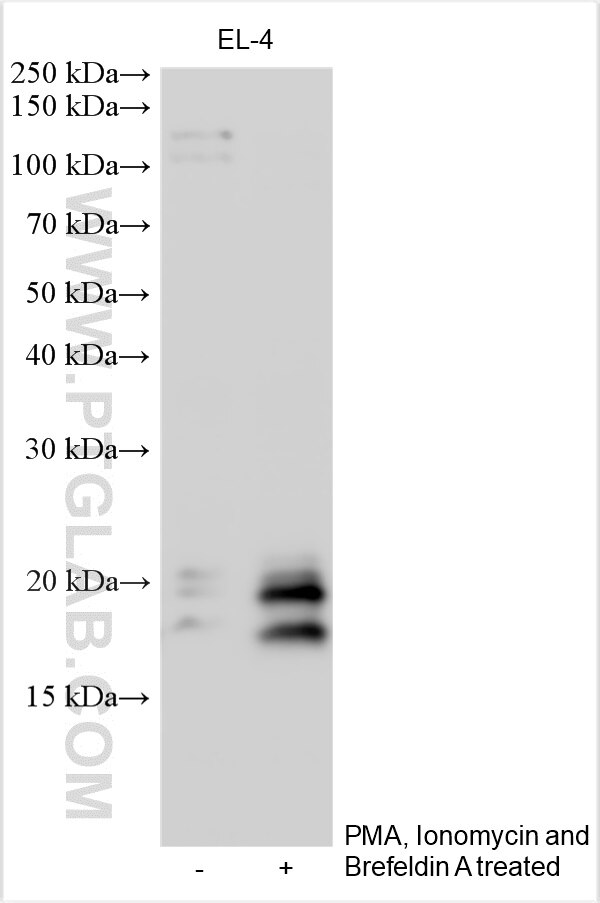Validation Data Gallery
Tested Applications
| Positive WB detected in | PMA, Ionomycin and Brefeldin A treated EL-4 cells |
Recommended dilution
| Application | Dilution |
|---|---|
| Western Blot (WB) | WB : 1:500-1:2000 |
| It is recommended that this reagent should be titrated in each testing system to obtain optimal results. | |
| Sample-dependent, Check data in validation data gallery. | |
Product Information
30198-1-AP targets IL-5 in WB, ELISA applications and shows reactivity with mouse samples.
| Tested Reactivity | mouse |
| Host / Isotype | Rabbit / IgG |
| Class | Polyclonal |
| Type | Antibody |
| Immunogen |
Recombinant protein 相同性解析による交差性が予測される生物種 |
| Full Name | interleukin 5 |
| Calculated molecular weight | 15 aa |
| Observed molecular weight | 18-20 kDa |
| GenBank accession number | NM_010558 |
| Gene Symbol | Il5 |
| Gene ID (NCBI) | 16191 |
| RRID | AB_3669705 |
| Conjugate | Unconjugated |
| Form | |
| Form | Liquid |
| Purification Method | Antigen affinity purification |
| UNIPROT ID | P04401 |
| Storage Buffer | PBS with 0.02% sodium azide and 50% glycerol{{ptg:BufferTemp}}7.3 |
| Storage Conditions | Store at -20°C. Stable for one year after shipment. Aliquoting is unnecessary for -20oC storage. |
Background Information
Interleukin-5 (IL-5) is a critical cytokine that regulates the growth, activation, and survival of eosinophils. IL-5 is produced by both hematopoietic and non-hematopoietic cells including T cells, granulocytes, and natural helper cells. IL-5 exerts its effects for proliferation and differentiation via receptors that comprise an IL-5-specific α and common β-subunit. Overexpression of IL-5 in vivo significantly increases eosinophils and B cells in number, while mice lacking a functional gene for IL-5 or IL-5 receptor display a number of developmental and functional impairments in B cells and eosinophil lineages.
Protocols
| Product Specific Protocols | |
|---|---|
| WB protocol for IL-5 antibody 30198-1-AP | Download protocol |
| Standard Protocols | |
|---|---|
| Click here to view our Standard Protocols |

